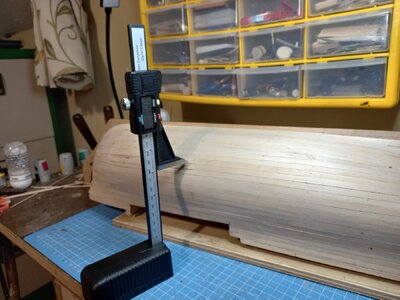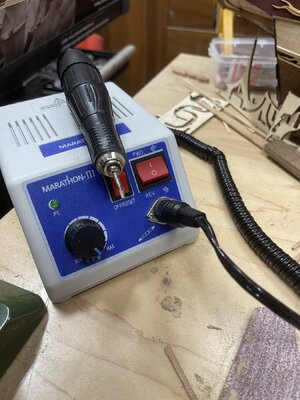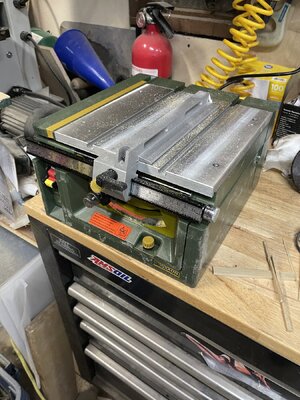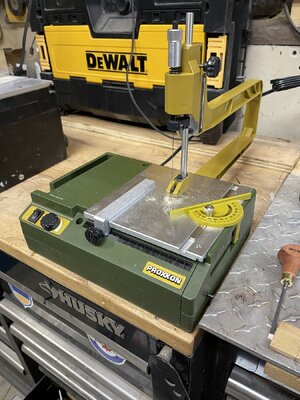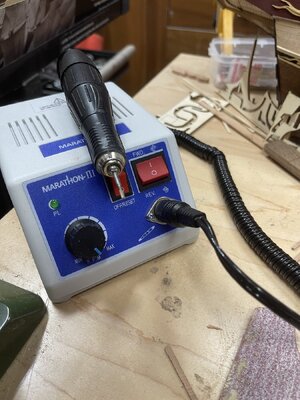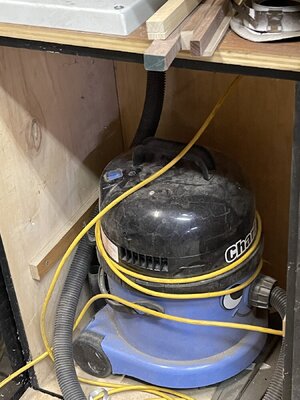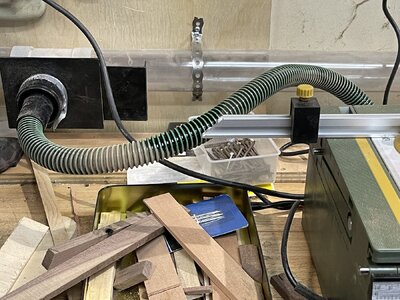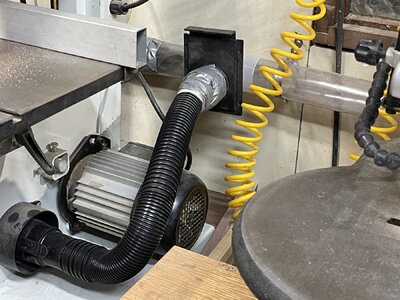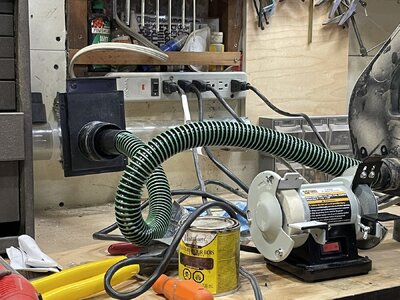-

Win a Free Custom Engraved Brass Coin!!!
As a way to introduce our brass coins to the community, we will raffle off a free coin during the month of August. Follow link ABOVE for instructions for entering.
You are using an out of date browser. It may not display this or other websites correctly.
You should upgrade or use an alternative browser.
You should upgrade or use an alternative browser.
Purchased shortly ago / sthg new in your workshop -> present it here
- Thread starter Uwek
- Start date
- Watchers 190
-
- Tags
- just purchased
Hi. How are you sharpening these? Cheers.Cabinet Scrapers
I have been using a basic, rectangular cabinet scraper for years but it only works on flat or convex surface. It will not work on the concave sections of a hull near the stern so I have bought a new set that includes a shaped scraper.
I find scraping the hull planking much more effective than sanding. When flat planks are laid on the curved edge of a bulkhead they naturally stand a bit proud of its surface at their edges. A scraper will concentrate initially on these raised prtions and rapidly eliminate them. Scraping is also less messy than sanding: the scrapings are larger than the dust generated by sanding . They just fall on the bench rather than becoming airborne. This is desirable when working indoors rather than a workshop. If the scrapings are collected and mixed with a bit of PVA glue they make a good caulking material.
View attachment 424037
Here is what I use. Available from Amazon. Link below.Hi. How are you sharpening these? Cheers.
Scraper sharpener link
No need for fancy jigs. just clamp it in a vice and use a file. A burred edge is more effective than a clinically squared one. Or google "sharpen cabinet scraper" for utube videos.
Thanks.No need for fancy jigs. just clamp it in a vice and use a file. A burred edge is more effective than a clinically squared one. Or google "sharpen cabinet scraper" for utube videos.
If you want the best most versatile & quiet go with the Foredom MicroMotor.
Yes it's pricey but I've always said 'You get what you pay for'
Yes it's pricey but I've always said 'You get what you pay for'
- Joined
- Aug 8, 2019
- Messages
- 5,500
- Points
- 738

No problems with mine from Aliexpress, it works perfect for only 15 euro.Ha ha , the 95 dollar rotary tool I got from Amazon labeled Marathon made in Korea lasted 2 days. The thing overheated and cramped out on me.
Time to go and get the real deal sold by Fordom
View attachment 428715
Yup that is the one I am going with. 550 dollars but it is a well made toolIf you want the best most versatile & quiet go with the Foredom MicroMotor.
Yes it's pricey but I've always said 'You get what you pay for'
I don't have the actual torque values however, it has full torque at 500 rpm and throughout its speed range. never had an issue with it stalling at low speed.What about torque? similar to the Classic Foredom SR or relies more on speed like the Dremel 4000? I really like working at low speed, but it needs torque for that.
- Joined
- Aug 8, 2019
- Messages
- 5,500
- Points
- 738

The one I buy are pretty strong, can't hold them with the hand. But keep in mind, drilling holes bigger then 1,5 mm. use a bigger machine. These are made for small work or sanding/milling (axially for the nail studio) . And therefore they are perfect. I use the them to shape the wood like ornaments like Ivan Trtanj does. Sanding and small holes.What about torque? similar to the Classic Foredom SR or relies more on speed like the Dremel 4000? I really like working at low speed, but it needs torque for that.
Hi,
I orderd rigging twine from https://www.modellbau-takelgarn.com/
0,3mm (beige), 0,5mm and 1,3mm
In the photo in comparision with the Occre twines
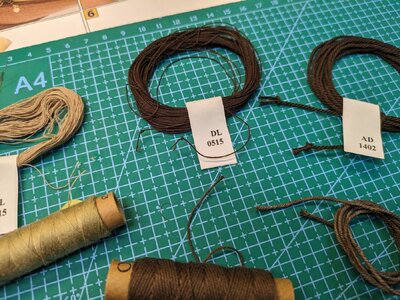
This new twine has a much nicer structure, especally the thin ones and absolutly no "micro twines" [no idea how to describe it]
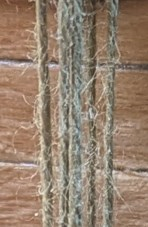
As I already started the rigging of my Polaris with the Occre twine I will continue with it.
I orderd rigging twine from https://www.modellbau-takelgarn.com/
0,3mm (beige), 0,5mm and 1,3mm
In the photo in comparision with the Occre twines
- the Occre 0,15mm has nearly the same thickness as the 0,3
- the Occre 0,5, I would say has double the thickness of the 0,5
- the Occre 1,5mm is about the same thickness as the 1,3

This new twine has a much nicer structure, especally the thin ones and absolutly no "micro twines" [no idea how to describe it]

As I already started the rigging of my Polaris with the Occre twine I will continue with it.
Thank you for posting your new twine. I'm also constructing an Occre model & will consider buying new twine.Hi,
I orderd rigging twine from https://www.modellbau-takelgarn.com/
0,3mm (beige), 0,5mm and 1,3mm
In the photo in comparision with the Occre twines
View attachment 429462
- the Occre 0,15mm has nearly the same thickness as the 0,3
- the Occre 0,5, I would say has double the thickness of the 0,5
- the Occre 1,5mm is about the same thickness as the 1,3
This new twine has a much nicer structure, especally the thin ones and absolutly no "micro twines" [no idea how to describe it]
View attachment 429471
As I already started the rigging of my Polaris with the Occre twine I will continue with it.
Thanks for the tip Stephan, I will try my hand at waxing to see how it works out.Occre is cotton, and you always need to thread it with wax to get rid of the micro twines and make it look thinner. But the other yarn looks great.
I wish they would bring this in North America , the only tool on my bucket list


